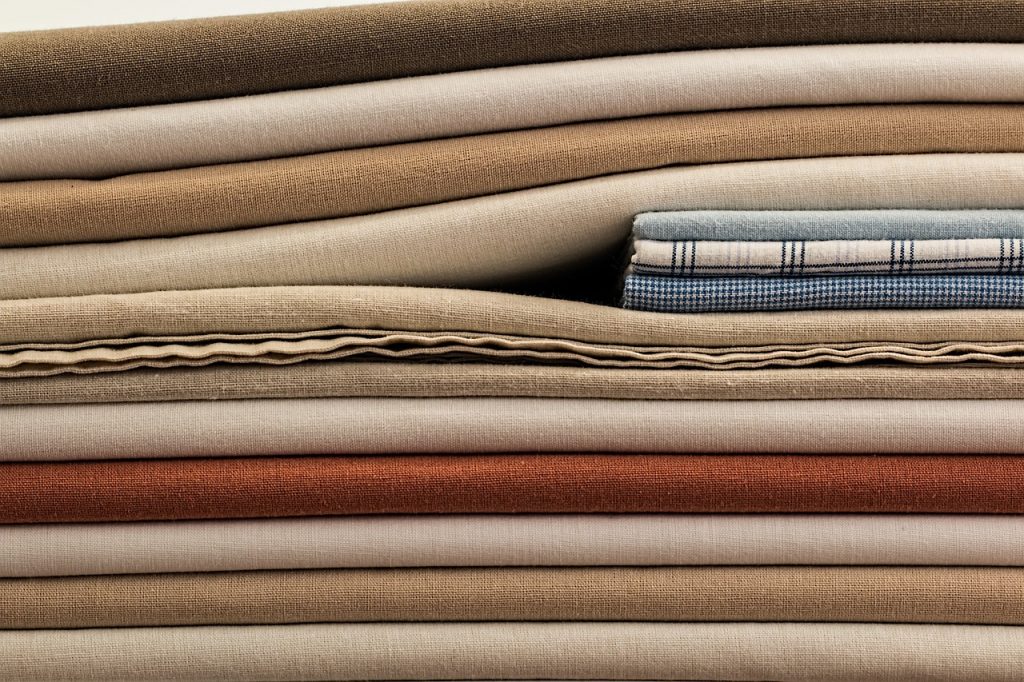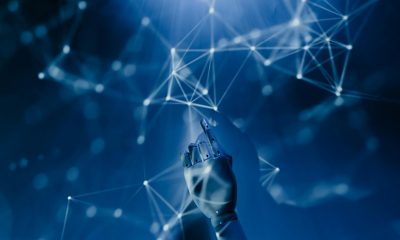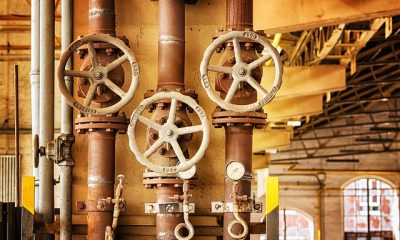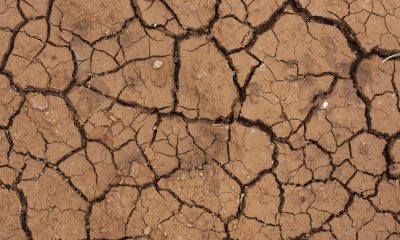Environment
A New Normal?: What We Need To Take Away From the Cape Town Water Crisis

The Cape Town water crisis is still very much in the news and there is a lot that needs to be learnt from what has been happening in the city where 4 million people are actively struggling to push backward Day Zero: the day when the city runs out of its water resources and water supply is shut all across the city. If you have been keeping up with the story, you’d probably know that Day Zero was set by the city’s authorities to occur early in April. With a combination of supervised action and good fortune, recent estimates have pushed the date by nearly two months, with Day Zero now set to occur some time in early June. However, it is still too early to celebrate for the citizens of Cape Town since the dams that account for the availability of water to the city are still at alarmingly low levels, with analysts wondering whether the increased scarcity of the essential natural resource should be treated as a new normal for the region or not. The mere thought of the same spells an apocalyptic warning for mankind, for it has been known for quite some time that the crisis being faced by Capetonians is not unique and soon the citizens of many major cities across the globe could be facing the same, albeit with differing levels of severity.
A Game of Numbers: What the Future Holds
We are made to learn in the earlier years of our schooling that water makes up nearly 70% of the earth’s surface but only 3% of it is freshwater, that is, water that we can drink. Couple that with the population boom witnessed over decades in developed and developing countries all over the world and you have statistics which suggest that a quarter of the largest 500 cities in the world are dealing with issues related to scarcity of water. Moreover, a warning has been issued by the United Nations World Water Development Report that by the year 2030 the global demand for drinking water would exceed the global supply by roughly 40% due to a combination of climate change, growth in population, and actions of humans: a daunting figure at the very least. Even today, more than one eighth of the human population lack access to safe drinking water, and on top of that another 2.7 billion people find water to be scarce at least one month of the year. Where this puts us 12 years down the line is by all standards a circumstance not pretty, and what this means for the cities touted to be next in line after Cape Town is pretty clear: save water as if your life depends on it, because it does, as put forth by former mayor of Cape Town Helen Zille on tackling the issue in her city.
The Next Cape Town: An Inevitability?
11 major cities have been identified as being the most likely to be affected by water crises, if any in the near future. The list also includes the south Indian city of Bangalore. Bangalore, known as technological hub or the silicon plateau of India, has often been touted as the country’s IT capital, and that is precisely why it is now so high up in the list of cities struggling to manage its water supply. Rapid property developments in the city along with the huge influx of people to fill up these spaces have put up immense pressure on the city’s antiquated plumbing and sewer systems. The whole system is so ineffective that it has been estimated through a national report itself that the city loses half of its water meant for drinking as waste. Rampant pollution over the years has just added to the huge challenge. Of all the lakes in the city, none are clean enough to be used for drinking or even bathing, and water from most of the lakes can be at best only used for industrial cooling and irrigation.
The list contains a total of 4 Asian cities out of 11 including Bangalore. The remaining three are also the capital cities of three of the largest Asian countries in terms of population: Beijing; the capital of China, Tokyo; the Japanese capital, and Jakarta; capital of Indonesia. While China is inhabited by nearly 20% of the world’s population, it is home to only 7% of the world’s reserves of fresh water. Like Bangalore, Beijing also suffers from high levels of water pollution which has attracted the attention of the Chinese government over the past few years. The remainder of the list includes the cities of Sao Paulo in Brazil, the Egyptian capital Cairo, the Russian capital of Moscow, Istanbul in Turkey, Mexico City, Miami: the only city from the US to make the list, and surprisingly even London, the capital of the United Kingdom. London receives an annual rainfall of only about 600mm and is dependent for most of its supply of water on the rivers Thames and Lea. It is estimated to face supply problems by the year 2025, and by the year 2040, London is on track to face serious supply shortages.
You Don’t Have to Wait, You Have to Start
The threats of water shortages are not new when you consider for how long the warnings have been in place, in the same places for all this while. Even if this is all new to you right now, there are lessons that have to be learnt from what is happening around us and it is the need of the hour to be aware and to be responsible for your actions and for those of others around you. We shouldn’t have to wait till the going gets as bad as it did in Cape Town when we can do better. The power to control/minimise the effects of water shortages is within you, and through your example and your actions it is extended to others around you. Take it upon yourself to be the person to lead the change, attaching all the more power to yourself as well.
Environment
The Future of Fashion: The Rise of Eco-Conscious Brands in the Luxury Market

The once opulent and exclusive realm of luxury fashion is undergoing a dramatic transformation. Driven by a growing global consciousness about environmental impact, consumers are demanding more sustainable choices, even at the highest price points. This shift in consumer preferences is reshaping the industry, forcing luxury brands to reevaluate their production processes and material sourcing.
As a result, luxury eco-friendly collections are becoming increasingly sought after, and brands that prioritize sustainability are gaining a competitive edge.
Key Trends Shaping the Market
The luxury fashion market is experiencing a significant shift as sustainability becomes a core value for both brands and consumers. One of the most prominent trends is the rise of eco-friendly fashion that blend high-end design with ethical practices.
These collections are characterized by the use of sustainable materials, such as organic cotton, recycled fabrics, and innovative alternatives to traditional textiles. Brands are also focusing on reducing their environmental impact by adopting eco-friendly production methods, including water-saving technologies and carbon-neutral manufacturing processes.
Brands like Onibai are at the forefront of this movement, offering exquisite designs that not only cater to the aesthetic tastes of discerning customers, but also align with their values of sustainability. As consumers become more aware of the environmental and social implications of their purchases, they are increasingly seeking out brands that offer a blend of luxury and responsibility.
Consumer Demand Driving the Change
Consumer preferences are increasingly dictating the trajectory of the fashion industry. A growing emphasis on sustainability and ethical practices has empowered consumers to demand more from the brands they support. This shift in consumer behavior has led to a surge in demand for luxury eco-friendly products, forcing fashion houses to adapt their business models accordingly. This demand for transparency and ethical practices has compelled luxury brands to rethink their strategies and adopt more sustainable business models.
For example, a recent study by McKinsey & Company found that 66 % of global consumers are willing to pay more for sustainable products. This trend is particularly strong among millennials and Gen Z consumers, who are more likely to be environmentally conscious.
Leading the Way: Eco-Conscious Luxury Brands
Several luxury brands have emerged as leaders in the sustainable fashion movement, setting a precedent for the industry. Onibai, for instance, has distinguished itself with its commitment to sustainability, offering luxury eco-friendly collections that resonate with environmentally conscious consumers.
By prioritizing the use of organic materials, low-impact dyes, and fair labor practices, Onibai exemplifies how luxury can coexist with ethical responsibility.
The Future of Luxury Fashion
The rise of eco-conscious brands in the luxury market marks a significant turning point for the fashion industry. As more brands embrace sustainability, the definition of luxury is evolving to encompass not only quality and craftsmanship but also ethical responsibility. This shift is not just a passing trend; it represents the future of fashion, where consumers and brands alike recognize the importance of preserving our planet while enjoying the finer things in life.
In this new era of luxury fashion, eco-friendly collections like those offered by Onibai are leading the way, proving that sustainability is not a compromise but a new standard of excellence. As the demand for sustainable fashion continues to grow, the future of luxury will undoubtedly be defined by its commitment to eco-consciousness, ensuring that elegance and ethics go hand in hand.
Environment
Redefining marine recycling through painting and sculpture

Frutos María Martínez, a self-taught visual artist, has been rescuing waste from the ocean’s waters for decades, turning it into beautiful and elegant artwork. Finishing his first painting and sculpture pieces at just fourteen, Frutos has spent his entire life guided by his passion for art. Becoming a professional artist in the mid-1980s after working at car dealerships, Frutos used his skills and expertise with metal to create sculptures and paintings, inspired by the materials he found along the Mediterranean Coast.
In his pieces, Frutos combines numerous medias to create sculptures, paintings, and collages. As part of his process, María spends time exploring the beaches and waters of Alicante, a Mediterranean city along the southeastern coast of Spain and his home since 1985.
Here, he has found all sorts of materials that have gone on to become pieces in his collections. Steel, iron, wood, nets, and textiles, among other objects, that Frutos salvaged from the ocean can all be found in his art.
By reusing and recycling these found objects, the artist is able to give new life to abandoned and forgotten waste. María recognizes the environmental issues we are facing at a global level, and his art seeks to raise awareness of these challenges. As his materials are pulled straight from the Mediterranean Sea, he is especially invested in taking care of marine life and our oceans. With each item the artist salvages from the ocean, one less piece of waste is polluting the waters.

Once the flotsam is collected, Frutos returns to his workshop where he creates works of art in different forms. While other artists may send their work to be fabricated by others, María could not imagine his pieces being created in a place other than his studio. Here, he uses his innate skills with metal and machinery to forge and construct works of beauty. His sculptures follow hard lines, both straight and curved, and his paintings exude color. When making his collages, he takes his found mixed media and creates new stories. He adds paint to wood that was floating in the sea or combines various materials together, reimagining a life for objects that were once trash.
With a true passion for his work, he creates through intuition. He explains that there is a moment when his art becomes completely emotional and personal, “each piece is imbued with my experiences and emotion, all lumped together, all conveyed by means of materials, technique, design and imagination.” The works his hands awaken and renew are the convergence of his mastery and his spirit, bringing new life to discarded objects.These fascinating pieces have been shown in numerous exhibitions, most recently at the Museum of the University of Alicante. There, the artist presented Acero y pecios del mar (Steel and Sea Wrecks), where two collections were displayed jointly, one offering sculptures focused on steel as a material and the other called Nueva Vida, or New Life, a collection whose pieces were created by recycling materials salvaged from sea wreckage. With this collection, he introduced a new layer into his work, adding an element of chaos and destruction to the backstories of his materials.
An earlier exhibition, Janus, displayed over 40 of Frutos’ sculptures on the University of Alicante’s campus. This exhibit, named for the Roman god of doors, gates and transitions, was influenced by the duality of life, of beginnings and ends, and of old and new. While his finished pieces reflect this duality, the materials used to create them manifest this theme through their first death being revived into new life, a tangible and concrete example of the contrasting polarity he was inspired by.
As with his sculpture-centered exhibitions, his shows highlighting his paintings are full of found materials. Pieces that Frutos creates hang with the weight of rescued and recycled materials, such as rusty iron, steel, and wood. This media has been taken from the ocean and included in his art, conjoining with resin, sands, and paint in bold and striking colors.
Frutos María’s ability to not only find new meaning in recycled and salvaged objects, but to clean up the oceans and make the environment less polluted, translate through his moving pieces of artwork, and because of this, he has made a name for himself in the art world.
Environment
Wind energy, the best way to invest into renewable energies

Over the last few years, wind energy has become the type of energy everyone can not stop talking about. This type of energy brings lots of benefits into the table when compared to more traditional sources of energy, like the energy proceeding from radiation or charcoal. Wind energy is cheap to produce, the most efficient renewable energy, and, most importantly, it is an ecological sensitive alternative.
Why should you invest in wind energy?
Wind energy is the energy of tomorrow. This type of energy made their big appearance during the XX century, when wind turbines would be used to bring energy to areas located far from the electricity grid, such as isolated farms, houses or factories.
During the XXI century, wind energy’s popularity kept on rising. Wind energy is as cheap to produce as traditional sources of energy, like radiation or charcoal burning, while falling into the category of renewable energies. This made wind energy become a top contender in the energy industry.
The wind industry’s future looks to be brighter than ever. The current generation is pretty aware of pollution and the effect it has on climate change. This has caused that governments all around the world start promoting new legislations and campaigns promoting renewable energy and, since wind energy is the most efficient type of renewable energy, it is expected that it will become the main source of energy by 2030. Now is the best moment to jump into the wind energy trend!
Making sure you set up an efficient wind farm
As it has been previously stated, wind energy is definitely an option you should consider if you are looking to power up any of your properties or business. However, setting up a wind farm isn’t a small investment, therefore, before starting this process we need to gather all the information we can about its viability. That is why we can not stop recommending that you consult with professional companies like Vortex FDC.
Vortex FDC is a company that has made a name for itself in the wind industry sector. Vortex assists their customers with all the information regarding wind resource they could need.
For example, an important factor we need to consider before setting our wind farm is the terrain. Not all terrains are appropriate to locate a wind farm, therefore, the terrain would need to be assessed before an installation that could result in a waste of assets if the terrain is not appropriate for it. Vortex FDC helps their customers evaluate where the wind farm is going to be placed, and providing information about the wind to choose the type of turbines that would yield better results in that area. Factors like the type of wind (extreme winds, turbulences, etc) or the temperature need to be taken into account when deciding which type of turbine would be more suitable for our wind farm. For example, if we plan to build a wind farm in an area that gets freezing and snowy in winter, we would need to get a turbine system that is cold resistant.
Vortex FDC runs a numerical weather model to feature all the variables that could affect the production levels of your wind farm, regardless of it being situated off-shore or in-shore. Thanks to their always up-to-date technology, you will be able to avoid unpleasant surprises regarding the energy production of your wind farm.
Overall, opting to use wind energy is an amazing idea that will benefit not only our budget, but also the planet. But, in order to do so, we need to make sure that wind farms are viable, and for that, we need to rely on professionals like Vortex FDC.
-

 Business11 months ago
Business11 months agoHow To Future-Proof Your Business With The Right Tools
-

 Travel10 months ago
Travel10 months agoTravelling from San Antonio to Guadalajara
-

 Travel7 months ago
Travel7 months agoTravel wellness tips for a healthier and more enjoyable journey
-

 Europe5 months ago
Europe5 months agoRecent Books by Boaventura de Sousa Santos: Law, Colonialism, and the Future of Europe











